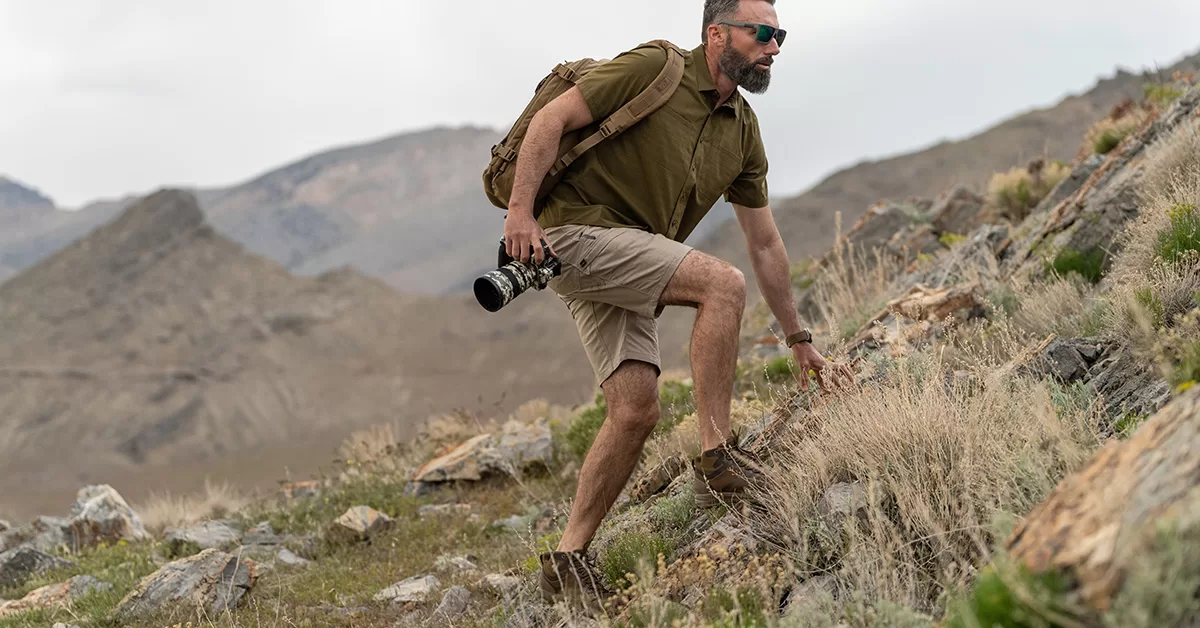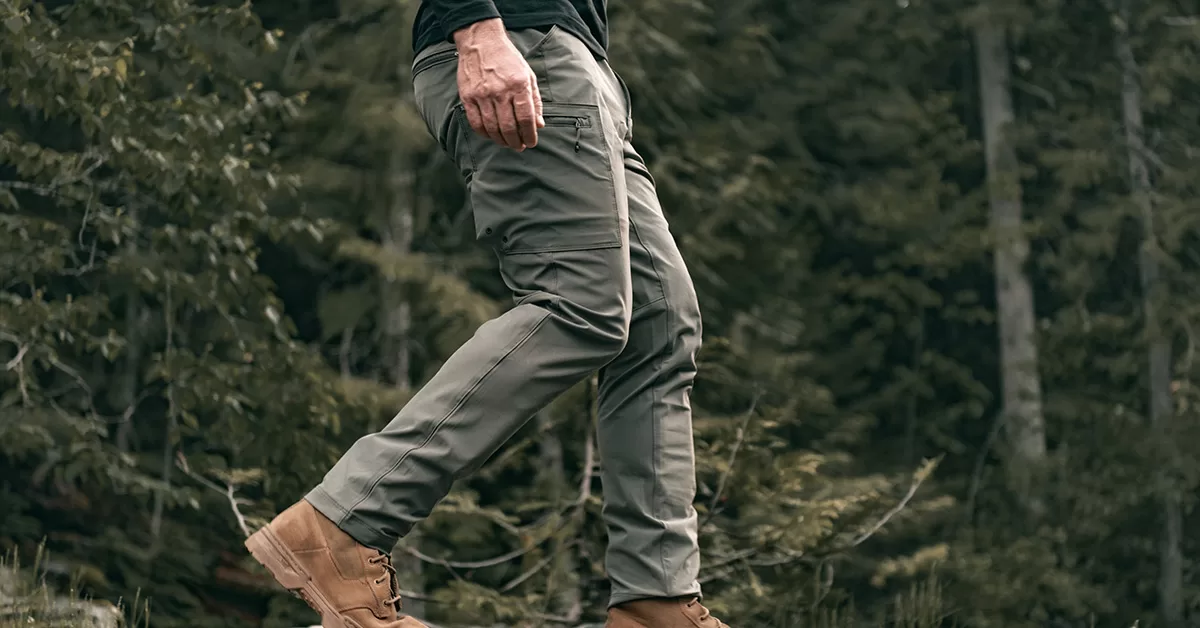National Preparedness Month: Vehicle Ready Kit
Americans spend an average of 18 days driving every single year according to a OnePoll study conducted on behalf of Cooper Tire. Statistically, we all know that driving is easily one of the most dangerous thing we do and most of us do it every day, but like everything else, there are precautions you can take to be better prepared for accidents, breakdowns, or other vehicle-related situations.
For National Preparedness Month, we’ve put together a checklist of essential gear for a vehicle ready kit that can help you to be better prepared while on the road.
Preparing a Vehicle Ready Kit
1. Select a Bag
We recommend keeping your essential gear in a prepacked bag where you know you can get to it. Choose a bag that’s durable with a large capacity and keep it stashed somewhere you know you can get to it like behind your rear seats or in your trunk. Duffel bags work well as they can fit a lot of gear and they’re easy to unload. Our RUSH LBD Lima bag fits the bill nicely with 56L of capacity plus it’s built with added reinforcement and shoulder straps should you want to carry it as a backpack.
2. Pack Tools
Inside your bag, you should always keep a versatile set tools that can help you with minor repairs. A multitool is a must-have for every car. Screws and bolts can easily come loose and nobody wants to loose hours of their life because they didn’t have the means to reattach a slipped battery connection. Some tools like our LE EMT Multitool also come with a glass breaker which can be useful for escaping your vehicle if the door isn’t an option.
If you’re involved in a serious accident and your car becomes inverted, you can easily become caught in your seatbelt. Unbuckling yourself is easy enough under normal circumstances, but under tension, while inverted at night right after a serious collision? You may have to cut your way out and a seatbelt cutter like our ESC Rescue Tool is the best way to do it. The protected blade will always stay sharp enough to slice through the thick seatbelt material and it significantly reduces the danger of cutting yourself in the process. Of all the gear in this list, a seatbelt cutter is the one that should be stored within arm’s reach of the driver’s seat rather than inside your kit. Ideally, you should keep one in your center console.
If you’re not into off-roading, chances are you don’t keep recovery tools in your vehicle, but they can still be a huge help should you get yourself stuck. A folding E-Tool or small shovel can sometimes be all you need to get yourself out of sand or mud, but if you’re REALLY paranoid keep a beach towel, 2×4, and a ratchet strap in your kit – between these 3 oddities, you can work your way out of even the serious sand traps with a little know how. Look up vehicle recovery methods before attempting.
Illumination tools belong in every ready kit, but especially the one in your car. The simplest tasks like changing a tire or checking your oil can be damn near impossible if you can’t see what you’re doing! We recommend headlamps like our new EDC Headlamp 2AAA due to the hands-on nature of most vehicle issues but a spare handheld light is never a bad idea. Finally, road flares. A highway at night is a very dangerous place to be, but road flares are surefire way of being noticed even if your hazard lights fail you. Just be sure to store them according to manufacturer recommendations and beware of potential fire dangers before igniting.
Speaking of fire dangers, extinguishers are a good to have in every vehicle and a capable vehicle fire extinguisher can be bought for as little as $45.00. Be sure to get one that is rated for Class A, B, and C fires and remember that it’s better to have too big of an extinguisher than too small. Also keep in mind that larger fire extinguishers will have to be recharged over time.
3. Don’t Forget Supplies
Your vehicle ready kit should also contain basic supplies that can help you in the event of an emergency. The first one that comes to mind in every one of our ready kits? You guessed it: water. Beyond hydration purposes, water can also be used as a temporary substitute for radiator fluid if you find that your engine is suddenly overheating. WARNING – research how to safely refill your radiator with water before trying this and remember that this a stop-gap solution that can hold you over only for a short while. If your radiator fluid has leaked, a much bigger repair is needed.
If your car does not already have a gas can, get one! You’ll need it if you ever run out of gas plus an externally mounted container can extend your vehicle’s range if you’re venturing off road or just want to avoid gas stations as much as possible. Just be sure never to drive with a filled gas can INSIDE your vehicle and always use as directed.
Medical supplies are another must have for your vehicle. Driving itself poses the risk of injury, so you should always have at least some bandages, antiseptic, and a tourniquet on hand, but don’t be afraid to expand; PPE, quik-clot, and medical shears can make for a much more capable med kit. Always remember to rotate supplies.
4. Cover and Protection
Never forget to prepare for the elements. Sure, you could change a tire when it’s pouring rain in a t-shirt and jeans, but a poncho will make this job so much easier for how little space it takes up. We also make several packable jackets for the extremely space conscious!
Have you ever left home to run a quick errand only to get there and realize you forgot your mask? Keep an extra in your car and you will never have this problem again! Our Comfort Masks even come in packs of two to make this redundancy that much easier.
When preparing for manual tasks, gloves are always good to have. Our Tac A3 Gloves are built to take a beating so your hands won’t have to. They can save you a lot of pain on a stuck bolt or nut and they can double as PPE for non-medical use.
If you have the space, a change of clothes erring on the side of warmth is always a good thing to keep in your car. Our renknowned Apex Pants are a good choice for a wide range of situations, but another pair of 5.11 pants might be preferred depending on your location. Emergency Mylar blankets are also a very compact and lightweight way to keep warm.
Footwear is often overlooked but can be extremely important. If you run out of gas coming back from the lake, the long walk to the nearest gas station will be made so much worse if you have to do it in flip-flops! Keep a good pair of waterproof boots like our XPRT 3.0 in your car/truck to be prepared for changes in weather or precarious terrain – just don’t forget to pack socks too.
If you’ve made it this far, you’ve got yourself a versatile vehicle ready kit that can help you get out of a wide range of situations you might find yourself in while on the road. Expand upon this list or substitute gear to suit your specific needs and as space allows.
VEHICLE READY CHECKLIST
- Bag & Gear Sets
- First Aid Kit
- Water & Food
- LE EMT Multitool
- ECD Headlamp
- Battery Pack/Phone Charger
- Kubaton Pen
- Road Flares
- Gas Can
- Shovel
- Pathfinder Watch
- Chapstick
- Hand Sanitizer & Facemasks
- Gloves
- Poncho
- Waterproof Boots
- First Aid Kit
- Emergency Blanket
- Car Fire extinguisher





